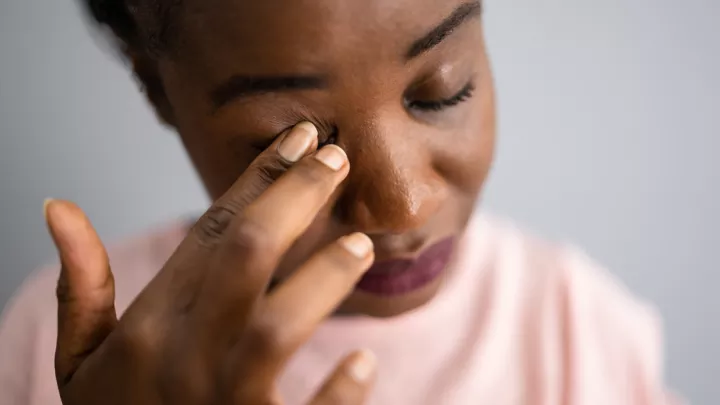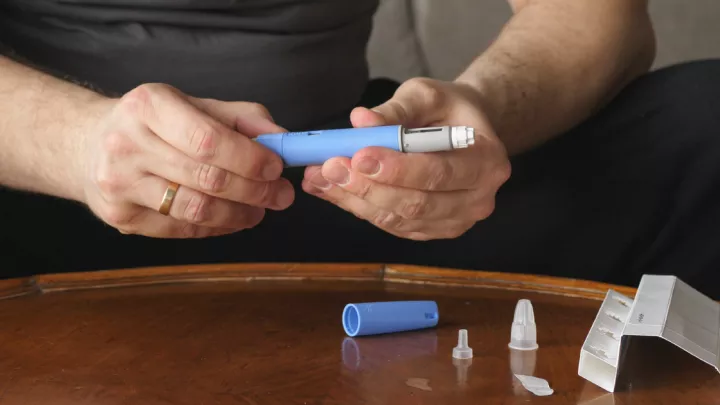When to keep your sick child home from school

“I don’t feel good.” Every parent hates to hear those four words as they hurry through their morning routine to get their kids off to school.
But with cold weather season here, a rise in viruses like the cold, flu, strep throat, COVID-19 and RSV make those words almost inevitable.
Many symptoms from these common viruses overlap, making it difficult to determine what type of illness your child has and whether they should stay home from school.
Schae Hanson, MD, a family medicine resident for Clarkson Family Medicine located at the Old Market Health Center, recommends keeping your child home if they have any of the following symptoms:
- Nausea
- Vomiting
- Fever
- Diarrhea
- Sore throat
How to treat cold, flu, sore throat, RSV and COVID-19
“The common cold, influenza, RSV and COVID-19 are some of the most common viruses we see in the fall and winter,” says Dr. Hanson. “They share many of the same symptoms, so it’s hard to say what virus you have without official testing, but the best thing to do when your child is not feeling well is to keep them home and treat the symptoms until they feel better.”
Most viruses are contagious for three to four days from the onset of symptoms, so it is a good rule of thumb to keep your child at home during this period, says Dr. Hanson.
Symptoms, however, can linger for five to seven days and sometimes as long as 10 to 14 days. If your child has COVID-19, the Centers for Disease Control and Prevention recommends staying home for five days from symptom onset to prevent the spread of infection.
Treating viral illnesses is to say that you are treating the symptoms, says Dr. Hanson. This includes:
- Use over-the-counter drugs like acetaminophen or a steroidal anti-inflammatory (NSAID such as ibuprofen) for fever and/or body aches.
- Get plenty of rest.
- Drink a lot of fluid, especially those with electrolytes.
How to treat strep throat and pink eye
Other common illnesses that can be easier to identify and may require antibiotic treatment include strep throat and pink eye (conjunctivitis).
Strep throat is usually accompanied by fever, sore throat, red appearance of the throat with possible white patches on the tonsils, or swollen lymph nodes in the neck. This should be treated with an antibiotic, which can be prescribed after in-person evaluation and testing with a throat swab. This illness can be quite contagious and can progress to other serious illnesses if not adequately treated, typically with antibiotics.
Pink eye, or conjunctivitis, can be caused by viruses, bacteria or allergies. Symptoms include redness in the white of the eyes, watery eyes (with clear tears or thick, yellow discharge), and pain in the eyes.
- If caused by allergies (likely accompanied by common symptoms, such as sneezing, itchy ears, and runny nose), allergy eye drops would be appropriate.
- If caused by a virus (usually accompanied by viral upper respiratory infection with symptoms of runny nose, cough, sore throat or fever), it will typically clear up with management of the other symptoms.
- If caused by bacteria, it will require antibiotic eye ointment, which has to be prescribed.
When in doubt, if your child has red eyes that don’t seem to be getting better, they should see a doctor. Most schools require that kids be checked out to determine if it is bacterial conjunctivitis since this is contagious and can easily spread to other children. To avoid the spread of conjunctivitis and other disease, be sure to wash hands well and often, wash pillowcases, and sanitize other high-touch surfaces.
If you are concerned about your child’s symptoms, make an appointment to see your family doctor. Symptoms that prompt evaluation in a clinic include:
- Symptoms that are worsening.
- Fever over 104 F that will not go down with medication.
- Fever that lasts more than three days.
- Trouble breathing, which can include noisy breathing, drooling, leaning forward, inability to lie down, or heavy breathing during which you can see the child’s ribs.
- Difficulty waking the child.
- Dry tongue or lower amount of urine production (signs of dehydration).
- Not eating or drinking.
- Sore throat accompanied by fever, bright red throat and white patches on the tonsils.
According to Dr. Hanson, the best protection against winter maladies is for you and your family to stay updated on immunizations, practice good hand hygiene, get plenty of rest and remain well-hydrated with water.
Make an appointment with one of our primary care doctors. Call 800.922.0000.







